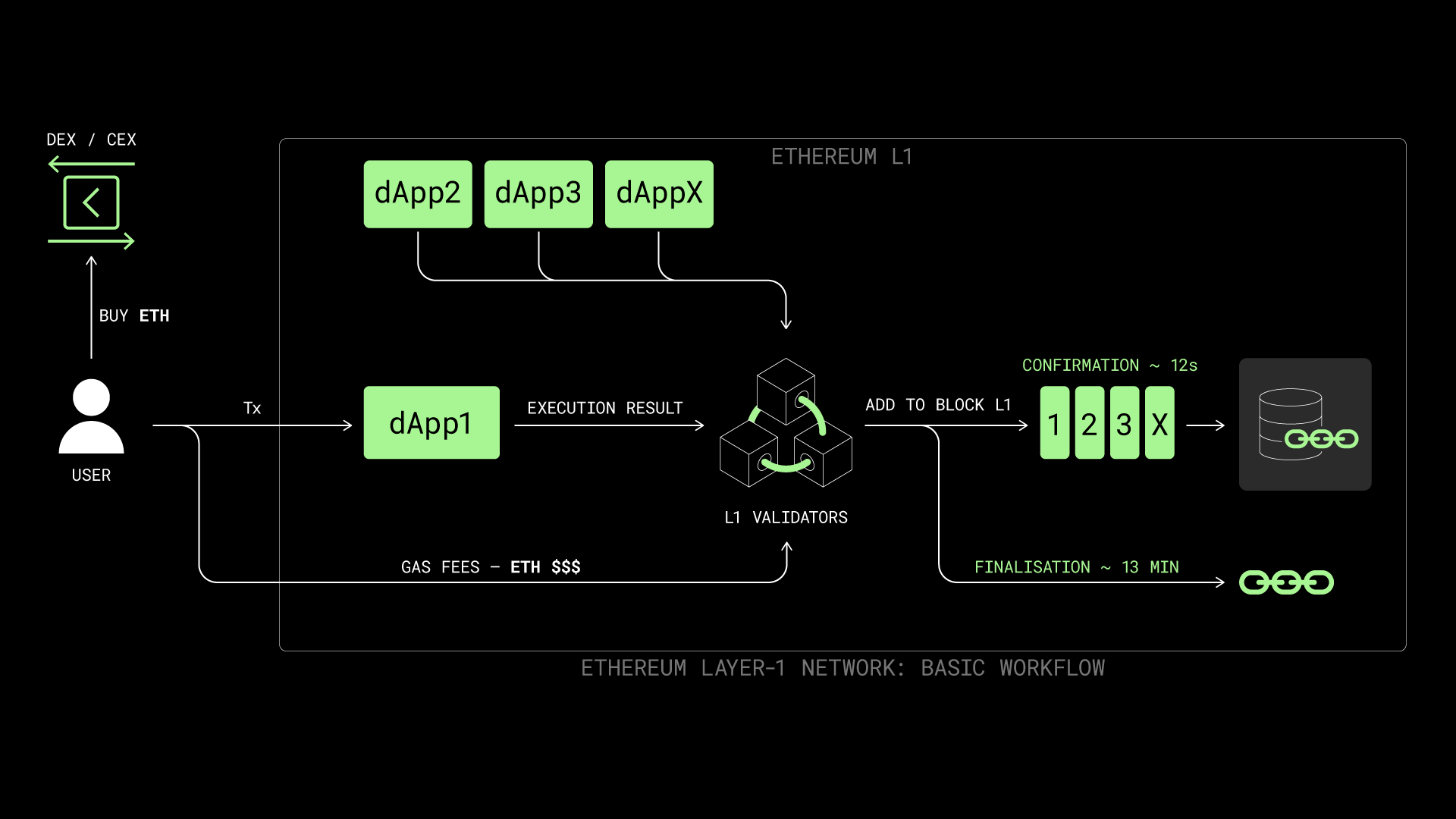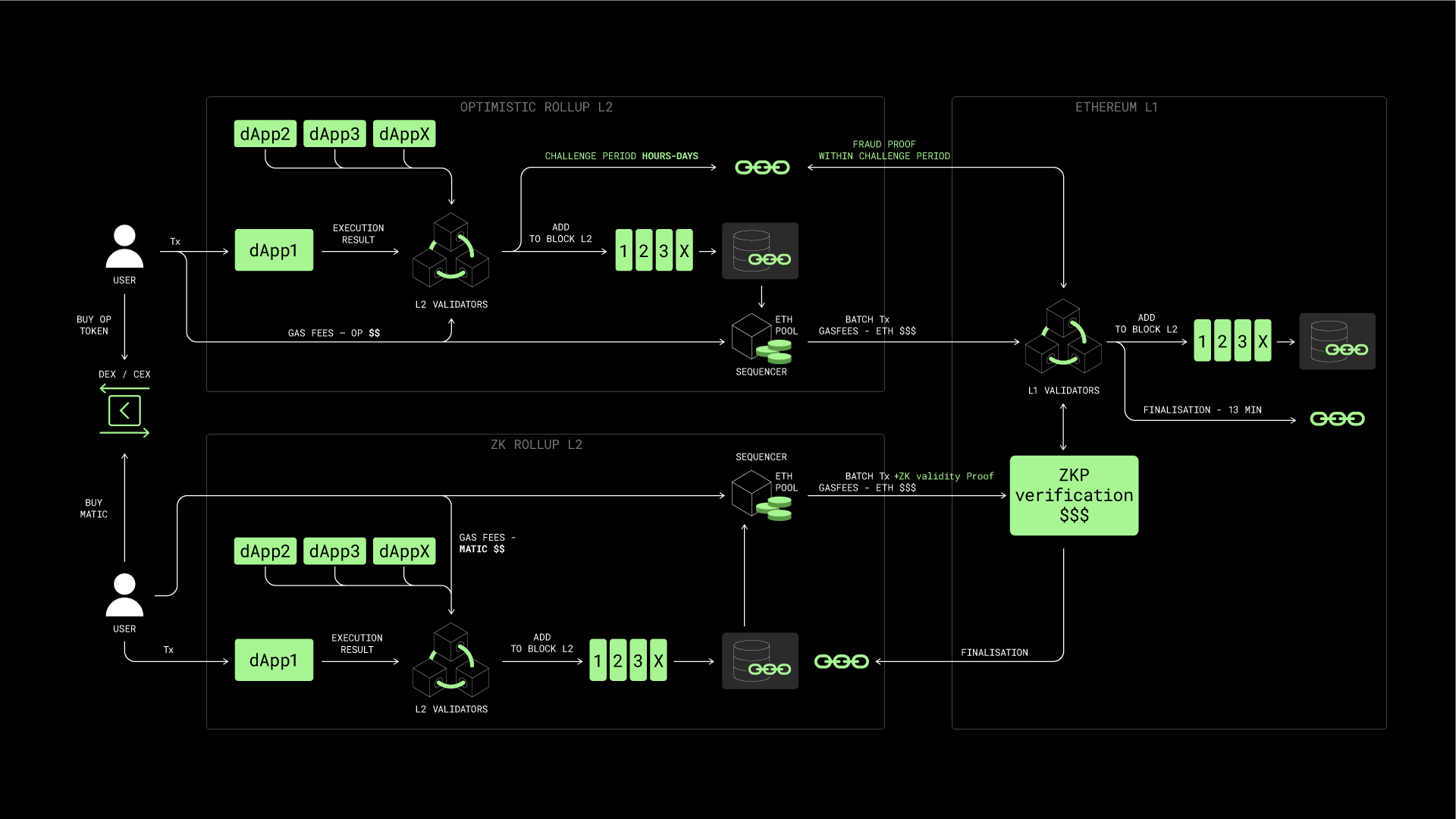Gear.exe: Revolutionizing Ethereum
Why Ethereum Needs Gear.exe
Ethereum remains the dominant blockchain for decentralized application development, but it faces significant challenges that hinder its scalability and usability. The network’s inability to process transactions in parallel, its slow finality times, and its high gas fees are critical barriers for developers and end users alike. These limitations are especially pronounced in high-demand sectors such as DeFi, gaming, and enterprise applications, where responsiveness and affordability are crucial to user adoption.
The root of these challenges lies in Ethereum’s single-threaded architecture. The lack of parallel processing limits the network’s computational throughput, making it difficult to handle complex or resource-intensive operations. Block confirmation time about 12 seconds introduces sensitive delays to user interactions. Finality times, averaging around 13 minutes, intensify the problem. While transactions in a block are usable after one block confirmation, applications requiring high security typically wait for finalization to ensure immutability. High gas fees (i.e expensive computations) further deter adoption, particularly for applications that require frequent or intensive computations.
 Ethereum Layer-1 Network: Basic Workflow
Ethereum Layer-1 Network: Basic Workflow
Layer-2 solutions such as Optimistic Rollups, ZK Rollups, and Based Rollups have attempted to address these issues by offloading transaction processing from the Ethereum main chain. However, while they improve scalability, they introduce trade-offs that limit their effectiveness in certain scenarios.
Optimistic Rollups rely on a lengthy challenge period for security, delaying transaction finalization from a few hours to several days, depending on the specific rollup implementation.
ZK Rollups, while faster, impose significant computational overhead due to the resource-intensive nature of proof generation that includes a combination of complex cryptographic operations, large circuit sizes, and the need for rigorous guarantees of correctness and privacy.
Both approaches often operate in isolated environments, fragmenting liquidity and complicating interoperability.
 Interaction of L2 Networks with Ethereum L1: Basic Workflow
Interaction of L2 Networks with Ethereum L1: Basic Workflow
In 2023, Based rollups were proposed as an alternative, leveraging Ethereum’s Layer-1 protocols for sequencing and decentralization. While these rollups reduce reliance on token-based mechanisms and simplify certain operations, they inherit scalability limitations due to shared transaction sequencing and data availability constraints. They sacrifice transaction flexibility needed for custom transaction sequencing, which can hinder their effectiveness for certain specialized use cases.
So What?
Gear.exe presents a fundamentally different approach by functioning as a decentralized compute network fully integrated with Ethereum. Unlike rollups, where smart contracts are deployed separately on Layer-2 chains, Gear.exe keeps all operations native to Ethereum. This design allows programs running on Gear.exe to interact seamlessly with Ethereum’s existing smart contracts, eliminating the need for asset bridging and avoiding liquidity fragmentation. Developers can utilize Ethereum’s robust ecosystem without the additional complexity introduced by traditional Layer-2 solutions.
Another critical advantage of Gear.exe lies in its memory capacity. With up to 2GB of memory allocated per program, Gear.exe enables developers to execute resource-heavy computations that are impractical on Ethereum or Layer-2 rollups. For comparison, Ethereum and Optimistic Rollups are constrained by gas limits, which indirectly restrict memory usage to a fraction of what Gear.exe provides. Similarly, ZK Rollups, while efficient in compressing data for on-chain validation, impose strict limitations on memory to prioritize proof generation efficiency. Gear.exe’s expanded memory allocation opens the door for advanced use cases such as Monte Carlo simulations, AI model training, and real-time data analysis.
The multi-threaded execution engine further sets Gear.exe apart. Ethereum and most rollups process transactions sequentially, limiting throughput and creating bottlenecks in high-demand scenarios. In contrast, Gear.exe supports parallel execution, allowing multiple computations to run simultaneously. This innovation is particularly beneficial for latency-sensitive applications, including high-frequency trading platforms, gaming environments, supply chain monitoring systems and more.
Cost efficiency is another defining feature of Gear.exe. By offloading intensive computations to its decentralized network, Gear.exe reduces the costs associated with executing complex logic. Additionally, it introduces a reverse gas model, where developers can cover transaction fees for users. This approach provides a frictionless experience similar to Web2 applications, enabling developers to design user-friendly dApps that prioritize accessibility and adoption.
Gear.exe also enhances user and developer experience by allowing off-chain transactions with pre-confirmations. Unlike Layer-2 solutions that often delay finality due to challenge periods or proof generation, Gear.exe delivers immediate computation results before they are finalized on Ethereum. This capability ensures real-time responsiveness while maintaining the security guarantees of blockchain-based systems.
The use of Rust as the primary programming language for Gear.exe programs further differentiates it from traditional Ethereum development. Rust is a widely used, general-purpose language known for its performance and safety, offering a robust ecosystem that is accessible to a broad range of developers. In contrast, Solidity, Ethereum’s native language, is blockchain-specific and requires a steeper learning curve. By leveraging Rust, Gear.exe simplifies the development process while enabling the creation of more powerful and maintainable applications.
In summary, Gear.exe addresses Ethereum’s limitations and surpasses the capabilities of Layer-2 solutions by offering seamless Ethereum integration, expanded memory capacity, parallel execution, cost-efficient processing, and developer-friendly tools. By bridging the gap between Ethereum’s security and the performance demands of modern applications, Gear.exe is paving the way for the next generation of decentralized applications across industries such as finance, gaming, AI tools, math modeling, supply chain management and many more.